As the rotation is hit with injuries Mike Minor delivers a gem
Injuries to Duffy and Singer. An escape act in the seventh. And an argument in favor of letting the pitchers hit?
It was not great news on the injury front as the Royals placed both Danny Duffy and Brady Singer on the IL on Tuesday.
For Singer, this comes after the worst start of his major league career on Saturday where he went only two innings and gave up seven runs on eight hits. The official reason for the IL move is right shoulder fatigue. While I’m sure that’s accurate, it wasn’t readily obvious from watching his last outing. His sinker velocity was right in line with his season average and his slider was actually running a tick faster than usual. (Thank goodness there are only two pitches to break down when looking at Singer, right?) But the ball was a bit flatter coming out of his hand, possessing less movement and bite than usual. A fatigued shoulder can manifest itself in different ways.
Here’s what Mike Matheny had to say about Singer:
“We knew at some point we were probably going to have to take a pause with all of our young pitchers. Instead of limiting them from the beginning, let’s just pitch and see how they feel and if we need to take a pause, we do it. This isn’t necessarily a shutdown as much as just let’s make sure that he’s feeling how he should be feeling.”
I’ve been writing about this since the end of last season. The challenge for every single organization in 2021 is figuring out how to keep pitchers fresh and healthy. And that’s at all levels. Matheny isn’t saying anything we didn’t already know. At some point, it was highly likely the Royals were going to have to hit the pause button on Singer’s season.
The timing on this is right. It gives the Royals the opportunity to skip a handful of starts for Singer and then send him to Omaha or Northwest Arkansas on a rehab assignment. And hey, why not explore working on that elusive third pitch while you’re on the shelf and building back some stamina in the minor leagues? It’s a small thing, but this also gives Singer the opportunity to pitch in some games with a little more meaning should he go on a rehab assignment. The Storm Chasers currently lead the Midwest Division in Triple-A East and the Naturals are a couple of games back in the North Division of Double-A Central.
The injury to Duffy doesn’t carry the same fortuitous timing.
First off, it’s the second time this year he’s going to miss action with a left forearm flexor strain. He was previously sidelined from May 17 to June 22. You’ll recall that, despite missing over a month of action, he did not make a rehab turn in the minors. Instead, the Royals decided to use him in brief outings as a starter as well as coming out of the bullpen in between those starts. A “hybrid” role, they called it. That lasted one week and one relief appearance.
Second, Duffy was one of the Royals’ potential trade pieces now that we’re less than two weeks from the trade deadline. Sure, he had the veto power that comes with 10-5 rights (players with 10 years in the majors and five with their current team have an automatic no-trade provision) but now it’s a complete lock that he won’t get moved. And going off the timeline from his previous turn on the IL, it could be close to September before we see Duffy again. If we see him again at all.
Asking questions of the rotation
The Royals were already struggling to come up with starting pitchers on the regular and now they’re down a pair of arms who, while they provided varying degrees of effectiveness and health, could at least be depended upon to take the ball on the regular turn. So who starts now?
Carlos Hernández will clearly stick in the rotation for the moment. He was electric at times in his start against Baltimore on Sunday and finished allowing two runs in four innings while striking out six. This is a great opportunity for him to show what he can do as a starter. I’m excited to see him toss 100 mph gas and mix it with his secondary pitches.
We can probably pencil Kris Bubic in for when Singer’s next turn would’ve come around. He was fantastic in relief on Saturday, saving the bullpen by going six innings while allowing just a single run. Make no mistake, he has plenty of work to do, but it was a strong outing coming after a string of three appearances (two starts) where he was knocked around quite a bit.
I suppose Ervin Santana could be used as a starter. He’s allowed runs in five consecutive outings going back to June 24, but he’s good for 50-plus pitches and while he’s far from a sure thing, he can provide some innings.
The other options are of course currently pitching in Triple-A: Daniel Lynch and Jackson Kowar. The overall Triple-A numbers aren’t great for Lynch, but it would appear something clicked for him in his start on Tuesday—at least until he ran into issues in the sixth. Kowar has made four starts since his return to Triple-A with varying degrees of success, but like Lynch, was solid in his last outing, throwing five innings of two-hit ball with eight strikeouts back on July 17.
With Lynch and Kowar on the 40-man roster, both are options for the Royals to fill some innings at the major league level. It will be very interesting to see how they handle the situation the second time around.
Point/Counterpoint
Let’s play a little point/counterpoint.
Point: Having pitchers hit in interleague games is a pointless exercise. It robs AL teams of a bat they normally count on. It also can short-circuit a strong outing from a starting pitcher.
Look, I am an unabashed AL Guy. Give me the designated hitter all day, every day. There’s just no reason to watch pitchers hit. Even if Mike Minor did showcase a decent swing on Tuesday. With an exit velocity of 103 mph! Let’s give him a little gif love.
Hit bat work aside, I was impressed with how Minor was attacking Brewer hitters. Apart from a wobble in the second inning when an error from Hunter Dozier on a potential double-play grounder put a little extra pressure on, the guy was absolutely cruising. Here’s his pitch count by inning:
First - 10 pitches
Second - 28 pitches
Third - 10 pitches
Fourth - 10 pitches
Fifth - 11 pitches
Sixth - 9 pitches
Minor was on 78 pitches through six. Had this game been played under AL rules, Minor absolutely would’ve been on the mound for the seventh inning. Maybe even into the eighth.
But here’s the counterpoint. And I think you know where this is going.
Counterpoint: Having pitchers hit in interleague games gives Ryan O’Hearn the opportunity to provide a go-ahead pinch-hit dinger.
Oh yeah.
While it was a little surprising the Brewers stuck with our friend Hunter Strickland in that situation, rather than go with a lefty for the platoon advantage, I figure the Royals would have countered with the recently recalled Ryan McBroom. And after that, a Milwaukee lefty would’ve had to have faced Whit Merrifield and then perhaps Carlos Santana from the right side.
Revising that gif for a moment, it’s a shame it doesn’t come with audio. The sound the baseball makes when hitting the signage above center field just has to be absolutely soul-crushing to a pitcher. Especially when that sound means you’ve untied the game.
While in this case the National League rules benefitted the Royals. But I still prefer the AL style of play.
Three pitches and the truth
Now that Statcast provides exit velocity and other metrics, it seems like we can lean on those numbers a little too much when trying to make the argument that Player X has been unlucky. Yeah, that happens and it can be a valid point. But there are times when it just becomes…a lot.
But damn if I didn’t feel that Jake Brentz was crazy unlucky in the seventh inning.
Brentz faced four batters and allowed three singles. Here is the location of his pitches on those hits.
For the at bat against Keston Hiura to lead off the inning, Brentz was pounding him inside with a mix of fastballs and sliders. On the seventh pitch of the at bat, Brentz yanked a fastball and delivered it way inside. Single.
Manny Pina swung at the first pitch he saw. Single.
Against Kolten Wong, Brentz went outside with his first three fastballs before hitting the inside corner on his fourth. Single.
None of these pitches were hit with authority. Yet all carried an xBA greater than .760. It’s not just about the exit velocity. It’s about the exit velocity and launch angle.
While the pitches were located in a good spot, the Brewer batters dropped them exactly where they needed to be for hits. Sometimes, the pitcher just has to tip his cap to the batter.
So in comes Kyle Zimmer. Tasked with the unenviable role of navigating the bases loaded and just one out, he was up for it.
The hardest-hit ball of the inning was good for two outs.
Baseball is fantastic, isn’t it?
Up next
I’m running short on time today, so will dispense with the Central issues portion of the newsletter. Don’t worry. The Royals’ position in the standings didn’t change.
Brad Keller takes his first turn of the second half this afternoon against Eric Lauer. First pitch is scheduled for 1:10 CDT. After last night in Milwaukee, the fans in attendance today could be nursing some wicked hangovers.




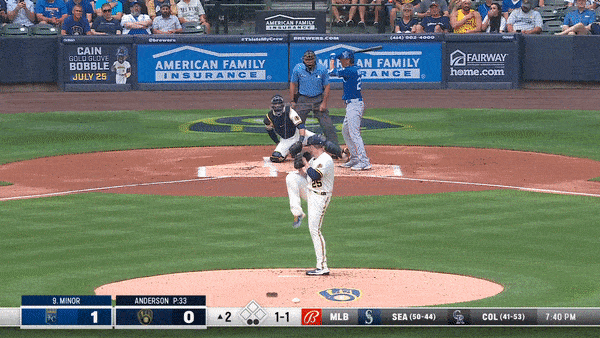
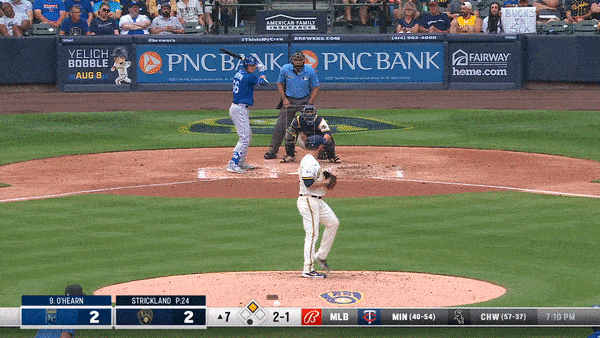
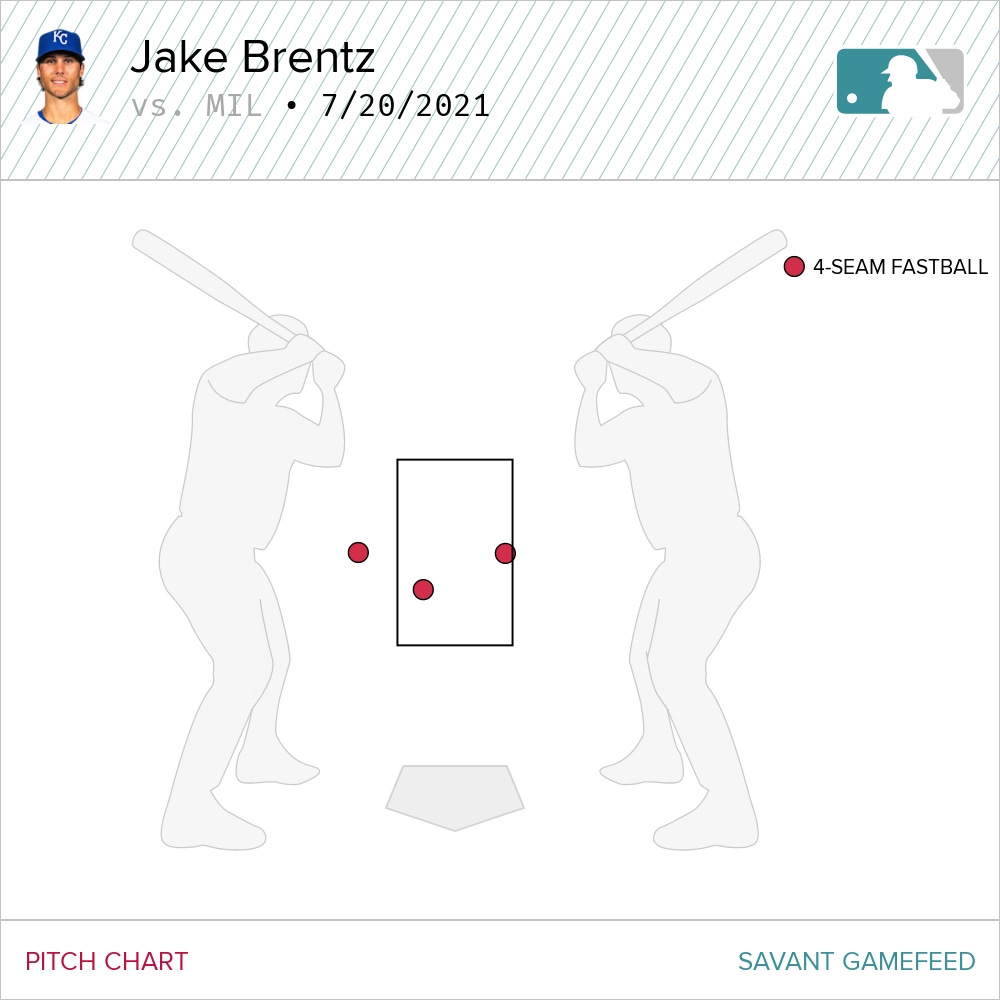
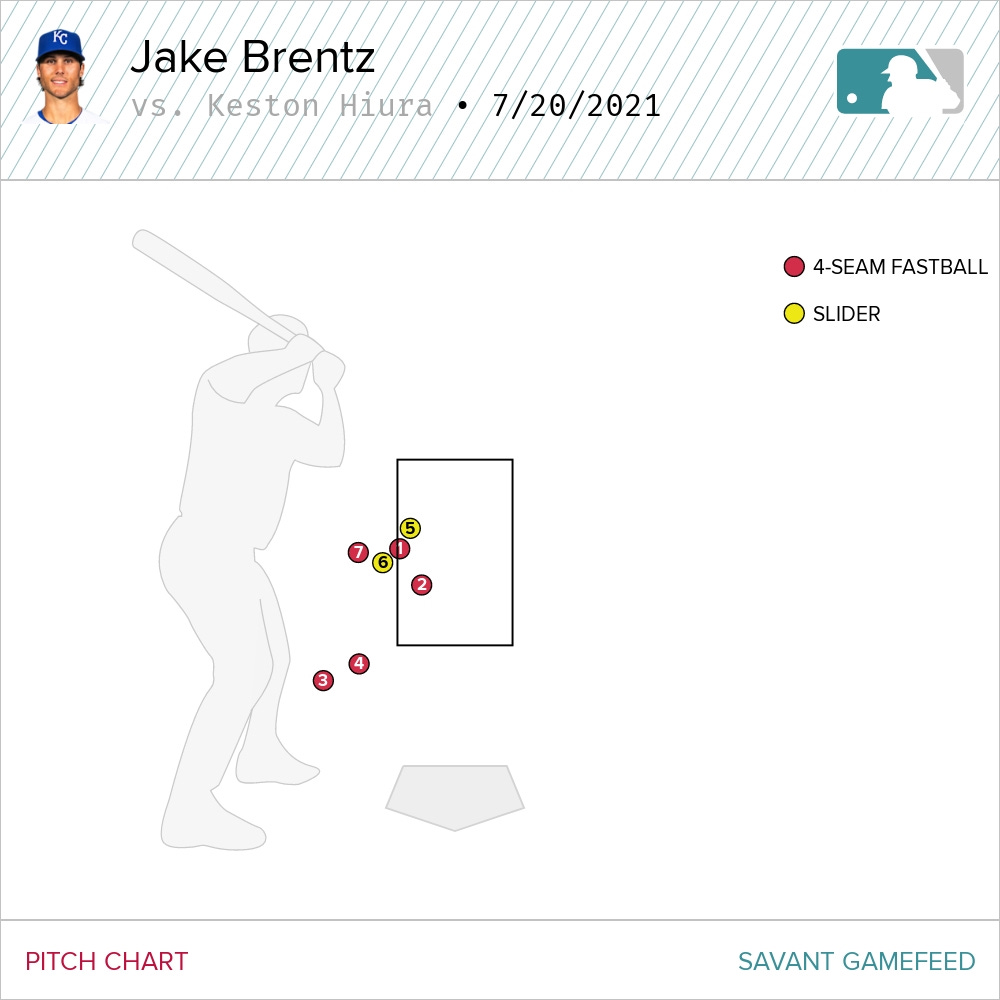
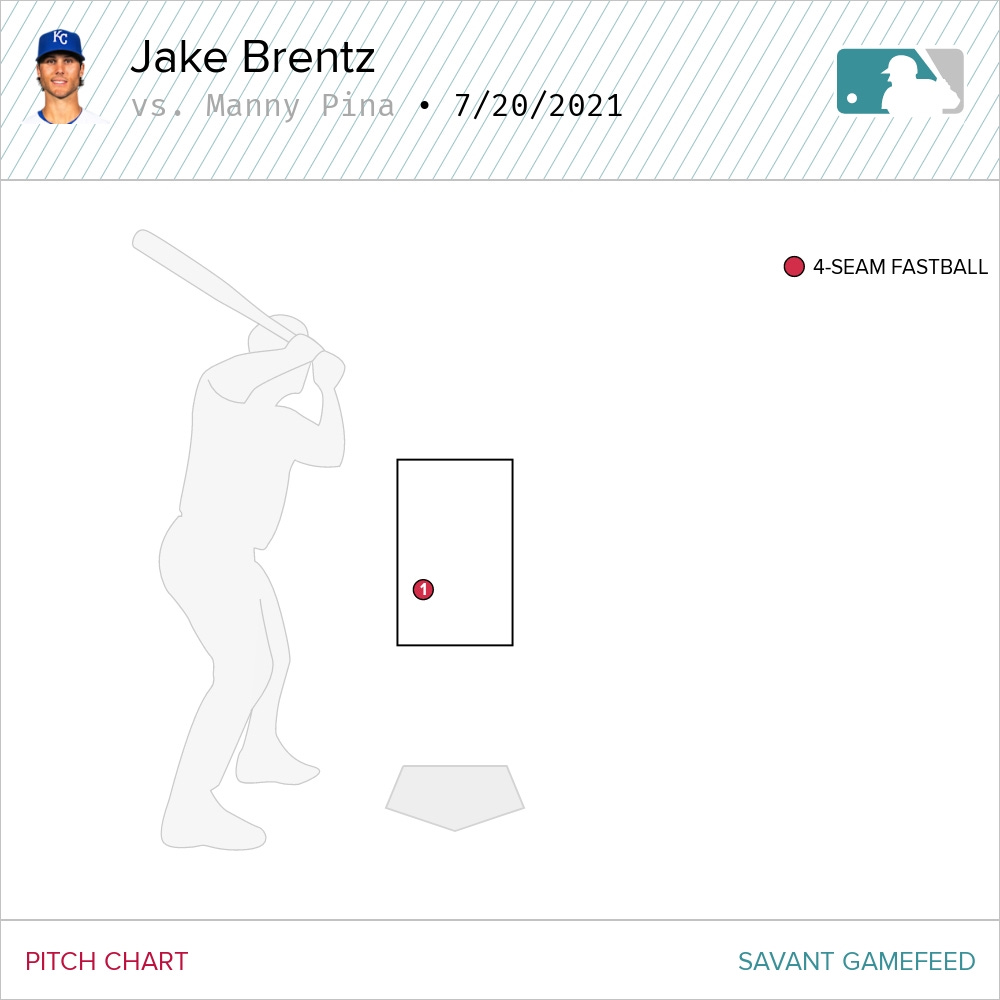


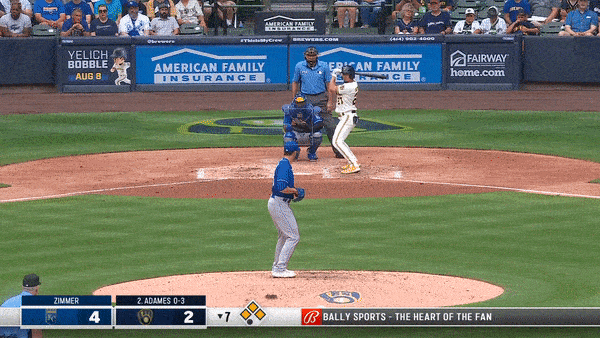
hello there, have any news on Mondesi? Thannks.